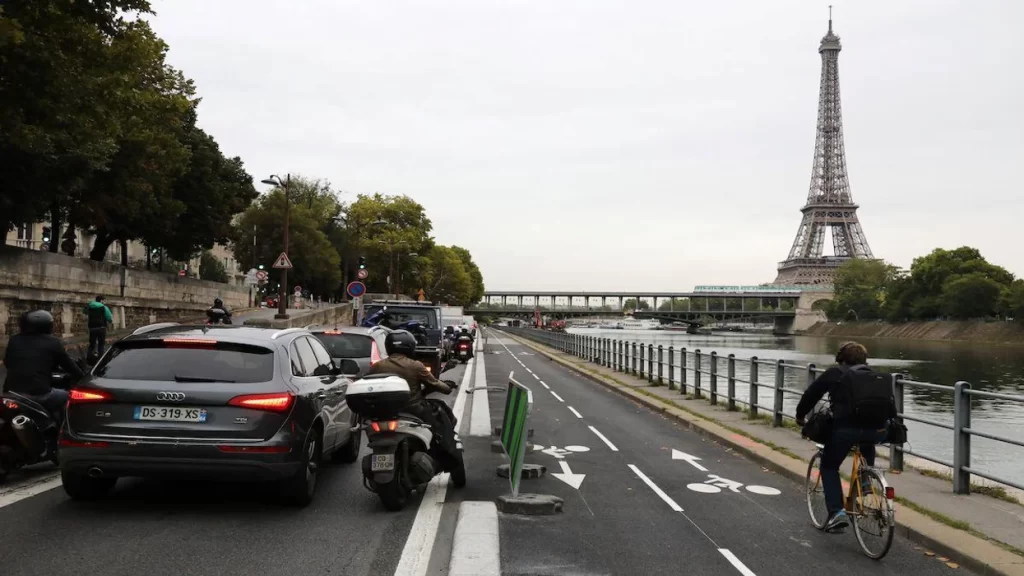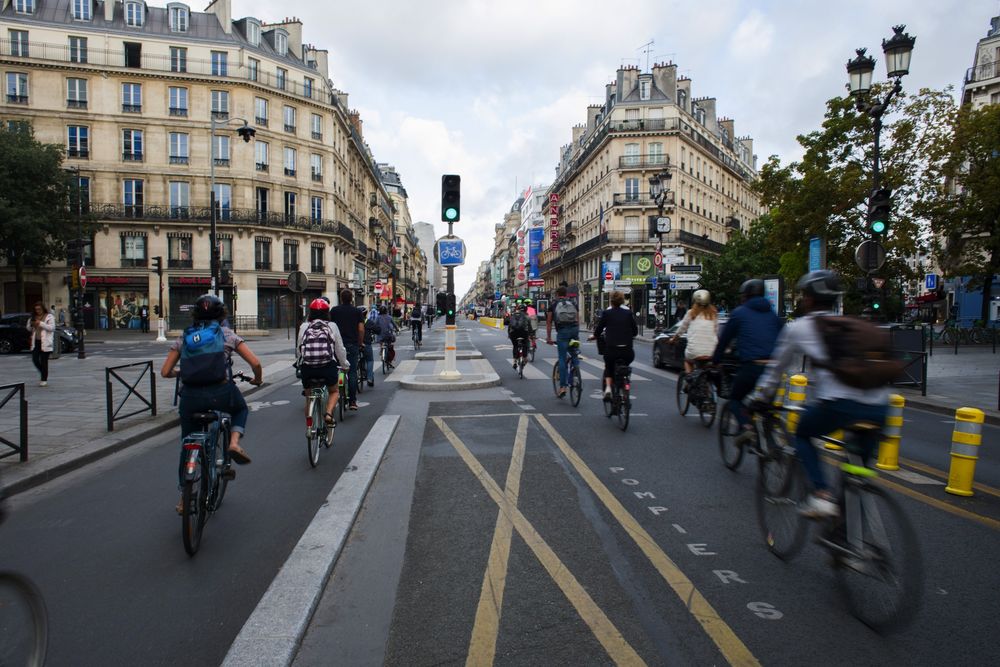Though Electric Vehicles & flying cars are dominating in this decade, we might have seen people wandering on the streets in bicycles especially during this pandemic situation. Cycling has been becoming again a new-normal to move (as fuel prices are increasing), and it’s absolutely healthy and economic too. On account of this, France puts forth $290 million to make the city of Paris entirely bicycle-able.
Making it bicycle-able doesn’t actually mean encouraging people to drive on cycles, but Paris does beyond that. Continue reading.!
Paris’ Plan to Make the entire city Cyclable

Many European cities are bike-friendly, but cars often still hover the roads. In this new initiative, Paris, France is investing 250 million euros ($290 million) to make the entire city bikeable. This means if you want to move within Paris, you’d be able to do so safely.
The plan wasn’t ‘just’ made out there, but is an update of the existing ‘Plan Velo’.
Plan Velo, spanned 2015 to 2020, sights for an express cycling network on the north-south and east-west axes and along the Seine. Now the city hopes to take its biking initiatives further as more and more people turn to cycling to get around Paris.
Paris had a 47% increase in bicyclers between 2019 and 2020, and 22% between 2020 and 2021. This shows that inmates prefer cycle to rove the city. Paris, viewing the move, made permanent more than 50 kilometers (31miles) of what were temporary bike-only lanes, called coronapistes.
The update ‘Plan Velo: Act 2’, spans from 2021 to 2026, to go completely cyclable. Under this, the town’s mayor Anne Hidalgo aims to add another 130 kilometers (over 80 miles) of bike-safe pathways, in addition to the coronapistes. Besides that, more cycling facilities, transformation of some car parking spots into bike-parking and maintenance of the streets like snow removal and cleaning are included in the plan, paving the way for bicyclers.
Check These:
The city is already underway in removing more than 70% of existing on-street parking spots designated for motorcars. Plan Velo: Act 2 also outlines measures to teach children to ride bikes in schools, add repair workshops in each district of the city, and encourage cycling tourism
As such, Paris is responding by adding a total of over 180 kilometers (112 miles) of dedicated two-way cycling paths and making safer cycling pathways against car traffic on 390 kilometers (242 miles) of one-way streets. The city also plans to configure traffic lights to benefit commuters who choose to bike or take public transit instead of driving.
“Until now, automobile traffic has been favored through the regulation of traffic lights,” the new plan reads. “From now on, priority is given to buses, trams and bicycles thanks to a ‘green wave’ system (specific setting of traffic lights).”
These measures will only help the city’s goal to become one of the top bike-friendly locations in the world. With continued success, Plan Velo: Act 2 may even encourage other metropolitans around the world to follow suit.






